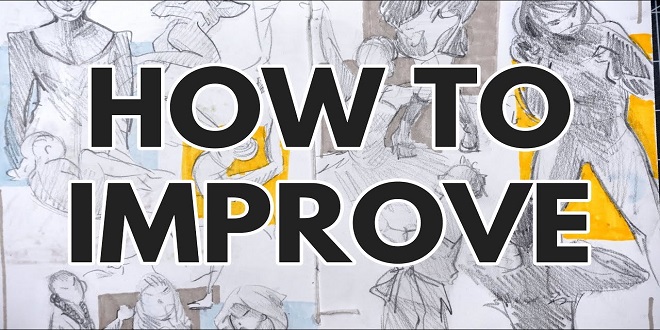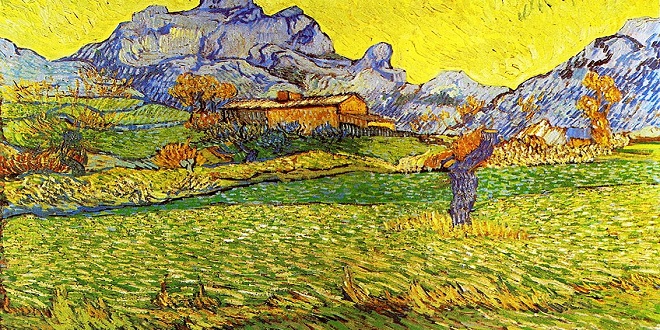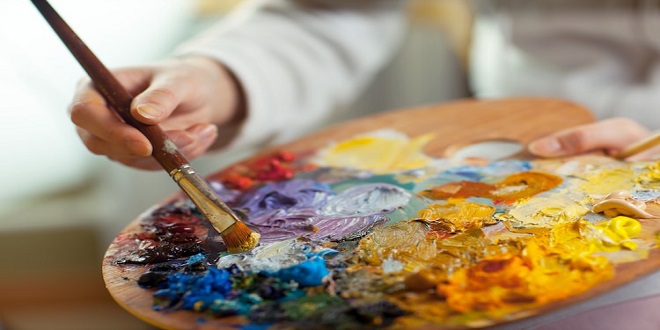Tips to Improve Your Painting

Painting is an art that anyone can enjoy, no matter their level of skill. There are many tips and tricks that you can use, no matter how advanced or beginner you are to improve your painting abilities. This blog post will share some of our top tips to improve your painting skills. These include learning to stay focused and positive, as well as using the right tools. You can find helpful tips for beginners or for experienced artists looking to improve.
Learn the Basic Principles Of Painting
It’s a great way for you to express your creativity and ideas. Painting is a versatile medium that can be used in many ways. We’ll be covering the basics of painting in this article so that you can create beautiful art.
It is important to be familiar with the three elements of composition when painting: value, shape, and color. These principles will determine the look of your painting and which elements will be highlighted.
Shape refers to the arrangement of features within a photograph, such as lines, shapes, or figures. Light and shadow are often the key to shaping shape. A shadow from a building’s side might cause a triangle-shaped shape.
In most paintings, color is the dominant element. Each color has a value (lightness, darkness), which allows them to be mixed together to create new shades. Red, for example, has a high value to stand out against other colors. However it’s not as light as yellow or white so it won’t fade when mixed with other colors.
The value refers to the lightness or darkness of an area in a photograph, painting or other media. Values are used to make certain areas darker or lighter than the surrounding area when you paint with markers or pencils. Shadows look darker than areas directly illuminated by light sources, such as people.
Analyze your Subject
- To plan your composition, start with a sketch or drawing.
2.To create depth and interest in your paintings, use strong light and dark values
3. Pay attention to how shadows fall and point in the direction that they point. These elements can be used to create mood and intrigue within your painting.
4. To add life and vibrancy to your subject matter, use color sensibly.
5. For inspiration, study art history and seek out innovative techniques used in the past by painters to improve your work.
Select the Right Paint Colors
The choice of paint colors is an important part of any painting project. However, it can be difficult to choose the right one. These are some tips to help you get started.
1. Select a theme
Before you begin choosing paint colors, choose a theme for the painting. This will allow you to choose paint colors that are consistent with the overall theme of your painting. You might choose complementary colors if you are painting a landscape.
2. Use Neutral Colors
If you don’t want your painting to be out of place or look odd, stick to neutral colors. These colors include gray, black, white, and light browns or tans. They can be used with any color scheme and will not clash with any other areas of the room.
3. Select Complementary Colors
You can create a dramatic effect by using complementary colors instead of neutrals if you want to paint a bolder look. These are colors that are opposite one another on the color wheel, such as red and green. They can create a striking effect on the eyes when combined.
4. Use Cool Colors
Cool tones are important when choosing paint colors. Cool tones add depth and moodiness, making paintings appear more realistic and intense. Use blues, greens and purples in your painting project to achieve this effect.
Correctly
It is crucial to choose the right medium and tools when painting. For example, if you use oil paints, ensure that the pan you use is large enough to hold your paintbrush. If you use watercolors, make sure that you have the correct container and brush. These tips will help you improve your painting skills and keep you safe and productive.
Be Careful When Painting
While painting can be a rewarding hobby that is both enjoyable and fulfilling, it’s an art form that requires patience and care. These are some tips that will help you improve your painting skills.
1. Practice, practice, practice! You’ll improve your painting skills the more you practice. You can paint whatever you like. It will teach you how to see details in your art.
2. Proper lighting is important. Use proper lighting if you are trying to paint delicate items or in dark spaces. If natural light is not available, you can either buy lamps or use it.
3. Take your time. It’s not like playing video games, where you can just hit the “done” button when you are done with an assignment. You should paint slowly and carefully so that every stroke looks planned and well-thought.
4. Polish it! After your painting is complete, clean up any mistakes made during the process. This will give your work a professional look and help it to look better overall.
Preparation Is Key
Preparing the canvas and brushes ahead of time will help you improve your painting skills. This will ensure you get the most out of your painting time.
1. Start by washing the canvas with water and a brush. This will get rid of any oil, dirt, or dust that has accumulated over time.
2. After the canvas has been cleaned, dust it lightly with a dry brush. This will remove any oil or paint that may have accumulated on the surface.
3. It’s now time to prepare your paints. Mix a little bit of each color together and place in a separate container.
4. Next, prepare your brushes! After rinsing the bristles, shake off any excess water. Next, apply a thin coat of paint to the canvas.
5. Add more paint base coats until you achieve the desired coverage. For darker colors, use thicker layers and thinner layers for lighter ones. However, it is important to not add too much paint to your walls as you may end up with uneven results.
6. Use a different brush tip to apply your colors one by one. This will create highlights and textures on the painting’s surface. Blend each color carefully with the last one to ensure that there are no seams or streaks between them.
Proper Lighting
Proper lighting is essential if you wish to improve your painting skills. You should choose lighting that is suitable for the type and style of your painting. Natural light and artificial light are both options.
Natural light is the best kind of lighting to paint because it is most realistic. Natural light can be found in any room by opening the doors and allowing in sunlight. When you’re painting outside, find a sunny spot.
You can also use artificial light for painting. Artificial light can be used to replicate natural light or create certain effects. Artificial lighting is preferred by some artists because it’s easier to control than natural sunlight.
Use a white background
A white background can help you improve your painting skills. This provides a clear canvas to paint on and reduces distractions. You can put more emphasis on detail and accuracy by incorporating white in your painting process.
A white background can also help you to create more compositional elements. You can easily add depth and interest to your paintings by using a simple white canvas.
A white background can help you improve your skills and creativity. It’s possible to try it, but you should take precautions to ensure that your paint doesn’t smudge and get damaged. Have fun, and most importantly!
Have a clear goal in mind
Setting a clear goal is key to creating a successful painting. It’ll be easier for you to stay focused and motivated once you have a clear goal. These are five tips that will help you get started.
1. Be realistic about your expectations. Expect to take time and practice before you can create a masterpiece. Although it may take time to perfect your style, don’t let that discourage you.
2. Admire the work of other artists. You can look at your favourite paintings to see how they were done if you feel stuck. Although you can’t guarantee you will adopt their methods, you can at least get some inspiration from their works.
3. Visualize the finished product. It can be helpful to visualize the finished product when you are starting. This will allow you to focus on the end product and not on each step.
4. Recognize yourself for any achievements. It can be difficult to stay motivated when things don’t go as planned. Recognize yourself for any achievements, even if they are small. Rewarding yourself can keep you motivated and make the experience more enjoyable.
Be patient and keep working until you get it right
Even if you have tried the tips, it is possible to still struggle to paint. However, not everyone is born to be a great artist. Remember that every painter must start from scratch and learn basic shapes and compositions before moving on to more complicated techniques. It may take time to perfect your skills. Be patient. You can still achieve great results with enough practice and dedication.
Conclusion
There are many ways to improve your painting skills, no matter how experienced or novice you are. We have collected some tips to help you improve your skills as a painter. These tips will help you improve as a Painter. These tips will help you grow as a Painter. They may surprise you at the improvements they make to your work.



